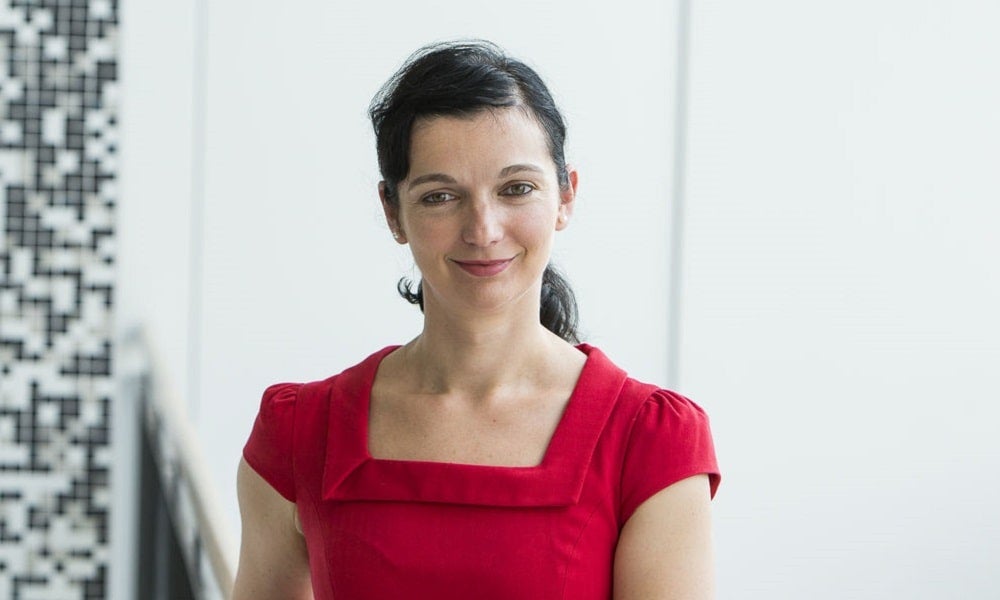Do ‘contrarian’ entrepreneurs hold the key to innovation?
Entrepreneurs and deep tech innovations are driving transformative change, supported by entrepreneurial ecosystems that foster risk-taking and collaboration
While deep-tech innovations like AI and even fusion energy are poised to transform industries, the true drivers of progress are often the entrepreneurs who pursue risky visions. That’s a strong argument for fostering innovative ecosystems where these contrarians can thrive.
According to Scott Stern, the David Sarnoff Professor of Management at the MIT Sloan School of Business, policy and academic frameworks should evolve to focus on fostering this entrepreneurial spirit rather than stifling it. In a discussion with Elvira Sojli, Associate Professor in the School of Banking and Finance at UNSW Business School at the recent AIEA-NBER Annual Conference on Innovation and Entrepreneurship, Prof. Stern explained that while predicting the trajectory of innovation is challenging, this quality is also a benefit.
“The great thing about innovation is that you can shape it – you can’t violate the laws of physics, and you have to think about how it affects value creation for society and for customers,” he said. “But it’s also true that the nature of entrepreneurship is that it’s the person who is unreasonably optimistic about something and is right who, ultimately, is able to at least bring things to market first,” he added. “And while we all might seem sceptical, they then get to say, ‘I told you so’.”
The AIEA-NBER Annual Conference on Innovation and Entrepreneurship roundtable forum
The rise of deep tech
As Prof. Stern explained, “We are very much at a moment of technological transition,” with increased investment and activity in what he called “deep tech” or “tough tech” – advanced technologies that the world is “just on the cusp of being able to realise the benefits of, and that will potentially lead to transformation and scale.”
Among these, artificial intelligence (AI) and machine learning stand out due to their near-term potential to redefine decision-making processes and enhance predictive capabilities. “We’re seeing a long period of investment paying off in terms of the development of a new general-purpose technology, as well as in the ability to reshape the relationship between what we’re able to predict (and how well) and our ability to use our judgment based on those predictions to make, hopefully, better decisions,” Prof. Stern said. (General purpose technologies have the potential to affect entire economic systems and can lead to far-reaching changes in such social factors as working hours and constraints on family life. Examples include the steam engine, electricity, and the computer.)
“But there are some quite deep technologies that most people are not yet thinking about, and that is the opportunity for real transformation,” he said. “Probably by far the most important of those is the prospect that within the next few years, one or a small number of firms will be able to demonstrate commercially viable fusion energy that will be transformative for the world, if they and their thesis are correct.”
Read more: As tech advances ramp up, can policy really spur innovation?
Risk and contrarianism
The difficulty of predicting which new technologies will be winners illustrates a critical difference between entrepreneurship and traditional economic activities in how risk and opportunity are ascertained. “In business, in economics, while we know that there are things that are risky or not, there is a very large real economy that depends on roughly having a shared understanding of what’s possible, of essentially agreeing to agree on what’s risky,” Prof. Stern explained.
“On the other hand, the core of the nature of innovation and entrepreneurship is new ideas; it’s proposing, as a human being or a small group of human beings, something that has not been done before,” he added. “And anything that truly hasn’t been done before has, by construction, a number of uncertainties.”
Innovators must consider whether their project will work, as well as whether it will enable meaningful value creation and customer demand, while understanding the potential costs and how those costs scale. “While it’s true that you can put some structure on that problem, the essence of it comes in two curious, distinctive properties,” Prof. Stern said. “The first is that it is precisely those who see the potential power of the innovation or of a particular entrepreneurial enterprise opportunity who pursue it.

“Entrepreneurs may or may not be optimistic in general, but they’d better be optimistic about the idea they are pursuing,” he added. “That means that they are contrarians; they are, by nature, people who disagree with the agreed-upon, shared understanding of the world. At the same time, the very thing that makes them contrarians makes it difficult for them to realise that vision, because they need to attract the resources, capabilities and expertise that would allow it to scale.”
Innovation and the freedom to experiment
This paradox leads to another challenge for entrepreneurs, Prof. Stern explained: “Every time they tell people about their idea, particularly in the early stages of a venture or a research trajectory, they are potentially subject to people understanding that it’s valuable and either undermining them, imitating them, or shifting bargaining power away from the innovator and entrepreneur towards those needed to implement the idea.”
It’s a tension between the need for a contrarian to realise a vision and the need to build it out and have a real-world impact that “has the consequence of ceding value to others in the innovation and entrepreneurship process”.
A/Prof. Sojli asked if it’s thus the case that the “rest of us are slowing [entrepreneurs] down”, but, according to Prof. Stern, there’s a place for that – and it demonstrates markets at work. “People do have contrarian ideas that are, in fact, wrong,” he said. “The great thing is that they, of course, find that out because there’s no demand, or people are not willing to join.”
Read more: Industrial policy: A double-edged sword for Australian innovation?
However, on the other side of the spectrum, regulatory constraints and the absence of permission structures can impede meaningful innovation. For policymakers shaping the innovation environment, the goal is to encourage initiative and risk-taking, pursuing contrarian ideas.
Most people don’t realise that the “deep virtue of a capitalist system is the freedom to experiment, for a very distributed number of people to try different things and then have markets adjudicate on those different experiments,” Prof. Stern said. “That’s the power of new markets.”
A call for ‘innovation policy 2.0’
For all these reasons, there is a need for a more nuanced approach to fostering innovation. As A/Prof. Sojli pointed out, “It seems like policymakers use the same tools, whether they’re trying to encourage innovators and entrepreneurs or a random business, e.g., tax credits or subsidies.”
While research and development tax credits are a proven tool for stimulating innovation, there is increasing space for an ‘innovation policy 2.0’ that goes beyond traditional methods, Prof. Stern said. This involves creating dynamic ecosystems that support entrepreneurs and allow for experimentation without excessive regulatory constraints. Prof. Stern lays out a lot of his thinking around these issues in his new book Entrepreneurship: Choice and Strategy.

Prof. Stern noted that effective innovation policy requires more than just financial incentives; it must provide a supportive environment that facilitates collaboration between various stakeholders, including universities, corporate entities, and the entrepreneurial community.
He added that in the innovation-driven entrepreneurial ecosystems he’s seen, the government generally plays more of an enabler or lubricant role. “It’s one voice among many, rather than a policymaker making a single decision that unilaterally shapes the system.”
Bridging academia and practice
A better understanding of the gap between academic research and practical innovation can help optimise how academia interacts with the real world and government policy, according to Prof. Stern. “Many policymakers have strong views on what policies they want, independent of the latest academic consensus, and that affects their willingness to move forward with that policy as opposed to another policy area,” he explained. “But if they know the academic research literature is lined up against them, that’s an important pressure point.”
Academics have the advantage of having a clear framework and more time to work through the issues. “Within academia, we are quite privileged in that, in these partisan and contentious moments, there’s much more neutral ground in a university environment,” Prof. Stern said.
Subscribe to BusinessThink for the latest research, analysis and insights from UNSW Business School
He also argued for an alternative view of research translation as playing a bridging role. “It’s thinking about where something fits within the broader policy conversation, and there are multiple ways to do that,” he said. “There are many academics who would like to advocate for a particular policy proposal. But, very often, the space of possible policy proposals is quite rich, and the relative comparative advantage of most academics is being able to provide some judgment and a framework for thinking about the offers to tap on to solve a problem within the policy conversation at hand.”
The future of entrepreneurship
Prof. Stern said he has worked extensively on how to “most effectively help scaffold and provide architecture for the process of innovation and entrepreneurship as a repeatable, rigorous process”.
A core insight from that work has been the importance of “premising a huge amount of the tools we provide, of the frame, of even the mindset, to be about the power of the choices that innovators and entrepreneurs make”, he said. “Give people tools for how to make choices and how to implement those choices effectively.”
And while there is much more to learn about optimising these processes, some of the required scaffolding is already in place. “We are now at a point where we can provide some choice architecture for focusing those entrepreneurs on their most important choices, giving them the tools to learn and experiment, and using that learning and experimentation process to drive the choices that allow them to build their companies,” Prof. Stern said.
